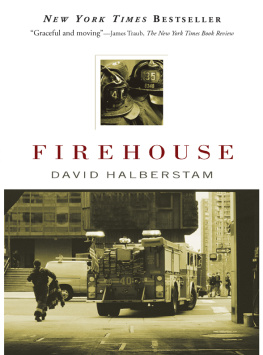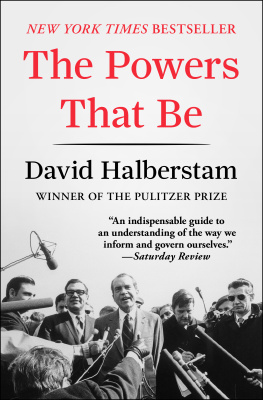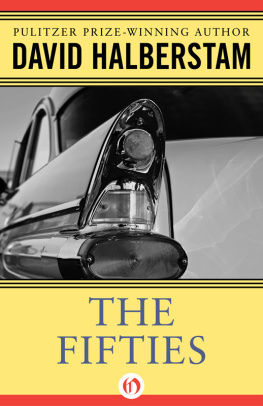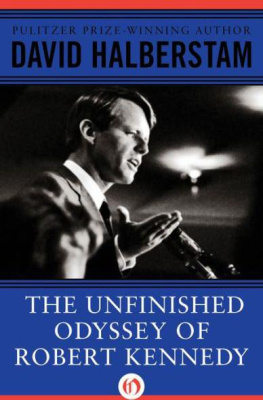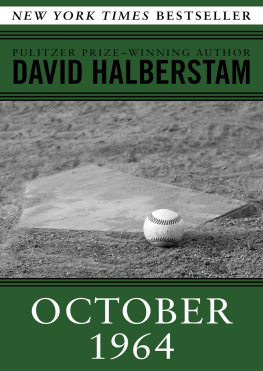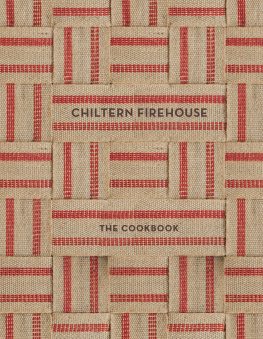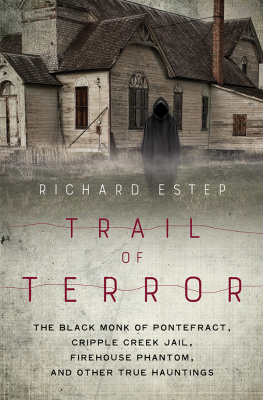
CONTENTS
The Upper West Side of Manhattan, just above Columbus Circle, was until quite recently a relatively poor neighborhood, and some of the veteran firemen at Engine 40, Ladder 35, located at Sixty-sixth Street and Amsterdam Avenue, like to recall how Amsterdam was once the dividing line between an Irish neighborhood to the east and a black neighborhood, just to the west. The black neighborhood used to be known as San Juan Hill, some say in honor of the black soldiers who moved there after the Spanish-American War, or perhaps because of the frequent, bloody street fights that occurred between the Irish and black kids early in the century, or finally because some of the citys earliest Puerto Rican settlers lived there. But after World War II, as the city became ever more affluent, as every piece of real estate in Manhattan became more and more valuable, the neighborhood began to change. The tenements that had housed the poor, where bookies haunted the hallways and homing pigeons were sometimes still kept on the roofs, and the cheap single-room occupancy (SRO) hotels, in which rooms rented for five dollars a night, began to disappear, to be replaced by solidly middle-class apartment buildings. The process accelerated in 1959 with the groundbreaking for Lincoln Center, a vast new cultural complex that would house the Metropolitan Opera, the New York City Ballet, the New York Philharmonic, and the Juilliard School.
In the early 1960s skyscrapers began to sprout into the sky like giant steel-and-glass fingers. What had before been barely a blue-collar neighborhood became not merely middle class, but in time, upper-middle class. The firemen and cops who worked the area, many of whose families lived in the neighborhood and in other working-class sections of Manhattan, were caught in this relentless process of economic and social change, and they began to move, first to the boroughsQueens, Brooklyn, and Staten Islandand then, in the last twenty years, to the satellite commuter communities surrounding New York City, on Long Island, and north of the city in Rockland County, New York, and in New Jersey.
The firehouse of Engine 40, Ladder 35, that stands guard over this ever more affluent neighborhood was originally built in 1961. It was a pleasant if not very fancy building, spacious with enough of a yard in back for the men to play basketball and for them to sit outside and barbecue food on hot summer nights. But in the 1980s the air rights above the firehouse were sold, and a sixty-story apartment house of the very kind that is a nightmare for any New York fireman was erected, ironically enough, right on top of the firehouse. The men were forced out during the construction of the towering building, and from 1988 to 1994 they were housed in the tunnels under Lincoln Center on Amsterdam, at Sixty-third Street. It was not the most pleasant of temporary bases, being windowless and dank, and there were in time numerous jokes about the fact that any children conceived by the men during this period might end up looking like moles. The men began to refer to themselves as the Cavemen, which eventually became the companys nickname, and since, much like military units, firehouses often have patches designating their units, the patch for 40/35 featured two Cavemena couple of firefighters looking as if they had recently escaped from a Flintstones cartoon.
The renovated station house, when it was finally completed, turned out to be quite ordinary, gray and functional, easy to pass by without gaining a second look. It gave off none of the wonderful aura of a classic firehouse. When the men moved back, they also discovered that it had been reconfigured, regrettably, to significantly smaller specifications. Everything felt tighter and more constricted. The backyard that had given them such pleasure was gone. The kitchen, so important in any firehouse as the center of social life, was now unacceptably small; there was one good-sized room where the men were to eat, but it was hemmed in by two much smaller rooms, one in which food was to be stored and prepared and the dishes washed, the other simply a storage room. The architect, the men grumbled, had not known a damn thing about being a fireman or how firemen lived. Over time there was considerable talk about breaking down the walls and making all three rooms into one larger one. But doing thatchanging the architects planswould have meant fighting through an immense amount of red tape, at the very least.
Although there were many opinions about what to do, there was almost no opposition to the idea of one larger room. So one weekend Bruce Gary, a chauffeur on the engine (that is a driver of Engine 40, a crucial role in the firehouse), a man who by dint of his awesome physical strength and equally formidable personal integrity was an imposing figure within the stations political and social order, decided that the debate about whether or not to expand had gone on for long enough. Even though they were supposed to consult with the department on matters such as building alterations, the time had come to act unilaterally, he believed. So Gary simply took a sledgehammer and started knocking down the offending walls.
That day Jim Gormley, who at the time was a lieutenant in the house, wandered into the building and was told by another lieutenant, Pete Gorman, just to go to his office because he did not want to know what was going onwhich, of course, he did not. As Bruce Gary was finishing his demolition, he was approached by one of his younger colleagues who informed him that he could not do what he was doing. Cant do it? Gary repeated in disbelief. What the hell do you mean I cant do itI just did it. That ended the debate; not many people wanted to challenge Bruce Garyon something like this anyway.
Firemen live in a world apart from other civilians. The rest of the world seems to change, but the firehouses do not. This is, in fact, as close to a hermetically sealed world as you are likely to find in contemporary America: It is driven by its unique needs, norms, and traditions, some of which are inviolable. The New York Fire Department is largely malewomen have in recent years become firefighters, but that has happened slowly, and many houses have remained all-male, including 40/35and largely white, and it is to an uncommon degree composed of men who come from fire-fighting families, men who, like their fathers before them, have wanted to be firemen since childhood.
A great deal of the tradition and the coherence is family-driven, with generation after generation supplying men to the department. It is almost as if there is a certain DNA strand found in firefighting families, where the men are pulled toward the job because their fathers and uncles were firemen and had loved it, and because some of their happiest moments when they were boys had come when they visited the firehouse and these big, gruff men made a fuss over them. The job and the mission and the sense of purpose that go with it have always been quietly blended into the family fabric. Its passed on father to son, and sometimes grandfather to father to son, says the Reverend Robert Scholz, who is the pastor of a Lutheran church located about three blocks from the 40/35 firehouse and who knows the men well. You see your father doing it, and youre proud of him. His life seems honorable and purposeful, and you see the richness of his friendships and the loyalty of these men to each other, and how, when youre young, the other firemen seem like additional uncles. And it seems so honorable.
All of this makes the departments hold on the men quite striking in an age when the lure of material and other ego rewards is so powerful. The hold the New York Fire Department has on the young men of the city and its environs is as strong as ever. The waiting list to get into the department is long, so long that many young men who want to be firemen start as cops and transfer to the fire department when their numbers finally come up. Yet the pay is marginal. According to one department veteran, a young married fireman with four children and a wife who doesnt work makes so little that he is technically eligible for food stamps. Almost all of the men at 40/35 could double their pay in other jobs.
Next page
